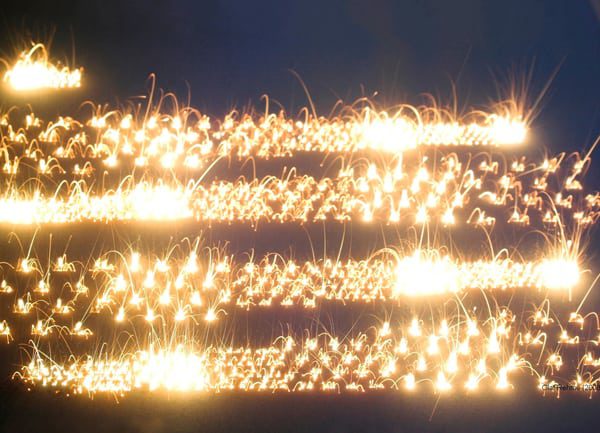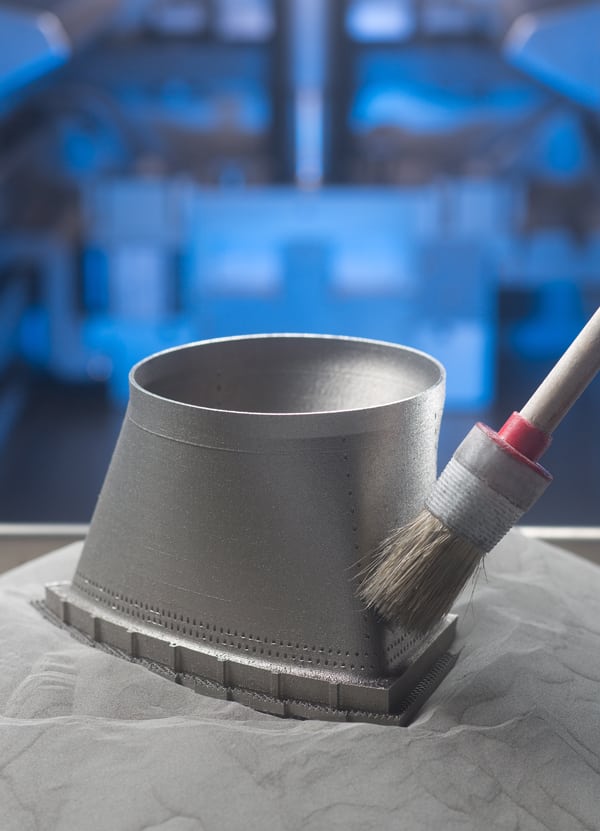3D Metal Printing Turbine Replacement Parts Could Cut Repair Times by 90%
3D metal printing is still an experimental process in nearly all industries, used primarily for prototypes and test products. But if Siemens and GE have their way, it will soon become a standard means of rapidly producing small numbers of industrial parts.
Siemens announced in December that it would begin using 3D printing—also known as additive manufacturing—to produce replacement burner components for gas turbines rather than using conventional methods. It said that for certain types of turbines, repair times can be cut by as much as 90%.
Meanwhile, GE Aviation announced that it would contract with Swedish company Arcam to produce 3D-printed components for its jet engines. Its oil and gas division plans to start pilot production of 3D-printed gas turbines fuel nozzles later this year. With conventional manufacturing methods, the nozzles are assembled from 20 separate parts, but with 3D printing, they can be created in a single piece. Rolls Royce is also reportedly looking at adopting the technology.
3D printing is slower than casting or molding, but far more cost effective if only a few parts are needed. For mass production, traditional processes still rule.
Siemens described its 3D-printing process, known as selective laser melting (SLM), as follows. Metal powder is placed on the floor of the printer, and a laser beam moves across the bed of powder. The powder melts but then cools relatively quickly into a solid shape, the first layer of the three-dimensional object. Because only a small amount of metal is melted at a time, it solidifies much faster than liquid metal poured into a mold.

Another layer of metal powder is then spread evenly over the object’s surface. Step by step, the desired shape is created. At the end of the process, a large amount of powder is left over that can be reused for the next printing cycle.
The surface of the finished object is typically granular. To make the surfaces completely smooth, SLM-manufactured materials may need to be polished afterward.

“Additive manufacturing opens up a new dimension in integrated design and manufacturing,” said Vladimir Navrotsky, head of technology & innovation at Siemens Energy Service Oil & Gas. “This technology enables faster manufacturing and repair of gas turbine components, with higher functionality and performance.”
Siemens has begun offering SLM for repairing the burners on its SGT-800 industrial gas turbine, instead of replacement. Repairing the burner tip with conventional methods is possible but slow. Using 3-D printing enables a 90% reduction in repair time, and repaired components can also be upgraded to the latest burner design.
One distinct advantage of 3D printing processes is that shapes can be produced that would be impossible using any other production process. Siemens recently introduced an advanced design burner swirl for its SGT-750 turbine that could only be manufactured by SLM. Here, a very complex multi-element component was manufactured by SLM as a single piece.
There are drawbacks, however, in that Siemen’s method cannot produce parts requiring high strength or ductility, such as turbine blades. But the company hopes to one day make that a reality.
3D-printed turbine blades could be produced with much more intricate internal air ducts, which could improve blade cooling, allowing higher temperatures in the combustion chamber and increased efficiency.
Lasers are preferred for small, delicate parts, but electron beams can also be used. That method is better for larger components. Arcam is using its electron beam method to manufacture titanium alloy turbine blades for GE Aviation.
—Thomas W. Overton is a POWER associate editor (@thomas_overton, @POWERmagazine).